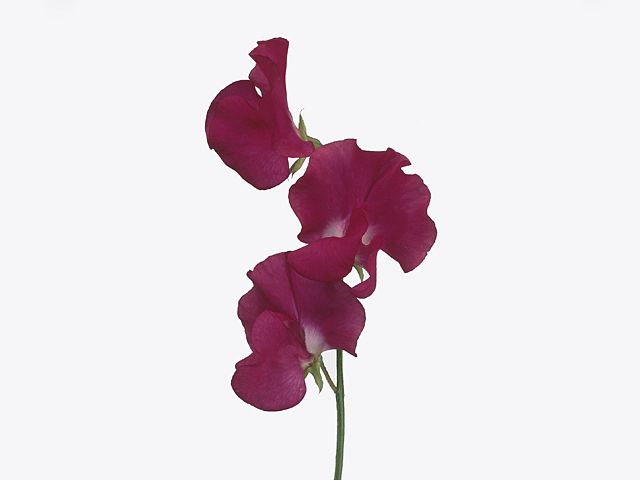Lathyrus odoratus other red

| Fruit type | Pod |
| Leaf type | Foliage leaf |
| Flower color | Red |
| Soil fertility | No poor soils |
| Inflorescence | Few-flowered |
| Structure (tissues) | Herbaceous |
| Light conditions | Sunny; Semi-shades |
| Plant, growth type | Climbing |
| Moisture requirements | Well-drained |
Lathyrus odoratus, also known as sweet pea, is a beautiful flowering plant that belongs to the family Fabaceae. It is popular for its vibrant red flowers and sweet fragrance, making it a favorite among garden enthusiasts.
One of the distinguishing features of sweet pea is its fruit type, which is a pod. These pods contain the seeds of the plant, which can be collected and stored for future propagation. The leaves of sweet pea are foliage leaves, providing an attractive backdrop to the striking red flowers.
Speaking of the flowers, sweet pea blooms in a mesmerizing shade of red. These vibrant and fragrant blossoms are a treat for the eyes and the nose alike, making sweet pea a prized addition to any garden.
When it comes to soil fertility, sweet pea thrives best in well-nourished soils. It is not tolerant of poor soils, so it is important to ensure that the soil has adequate nutrients for the plant's growth. Proper fertilization and regular soil testing can help maintain the fertility required for healthy sweet pea plants.
Sweet pea produces inflorescences, which are clusters of flowers. These inflorescences typically have few flowers, giving a compact yet visually appealing appearance. When in full bloom, the combination of numerous inflorescences creates a breathtaking display of red flowers.
In terms of structure and tissues, sweet pea is classified as an herbaceous plant. This means that it has soft and flexible stems, as opposed to woody or rigid ones. This characteristic enables sweet pea to climb and trail, making it an excellent choice for vertical gardening or trellises.
When it comes to light conditions, sweet pea prefers to be planted in sunny or semi-shaded areas. It requires a minimum of 6 hours of sunlight each day to thrive. While it can tolerate some shade, inadequate sunlight can affect the plant's growth and flowering.
Sweet pea is a climbing plant, characterized by its ability to climb and trail along supports such as trellises, fences, or even other plants. This growth habit makes it an ideal choice for adding vertical interest and creating a layered garden design.
For optimal growth, sweet pea requires well-drained soil. It is important to provide a soil medium that allows excess water to drain freely, preventing waterlogging or standing water around the roots. Regular monitoring of soil moisture levels and proper irrigation practices will help maintain the required moisture requirements for sweet pea.
In conclusion, Lathyrus odoratus, or sweet pea, is a stunning flowering plant known for its red flowers and sweet fragrance. Its pod-shaped fruits, foliage leaves, and herbaceous structure add to its overall appeal. Sweet pea thrives best in well-nourished, well-drained soil in sunny or semi-shaded locations. Its climbing growth habit and moisture requirements make it an excellent choice for vertical gardening. Whether used as a standalone feature or as a part of a larger garden design, sweet pea is sure to captivate with its beauty and elegance.
Market availability index by month:
| Jan. | Feb. | Mar. | Apr. | May | Jun. | Jul. | Aug. | Sep. | Oct. | Nov. | Dec. |
|---|---|---|---|---|---|---|---|---|---|---|---|
| 1 | 1 | 2 | 3 | 4 | 3 | 2 | - | - | - | - | - |